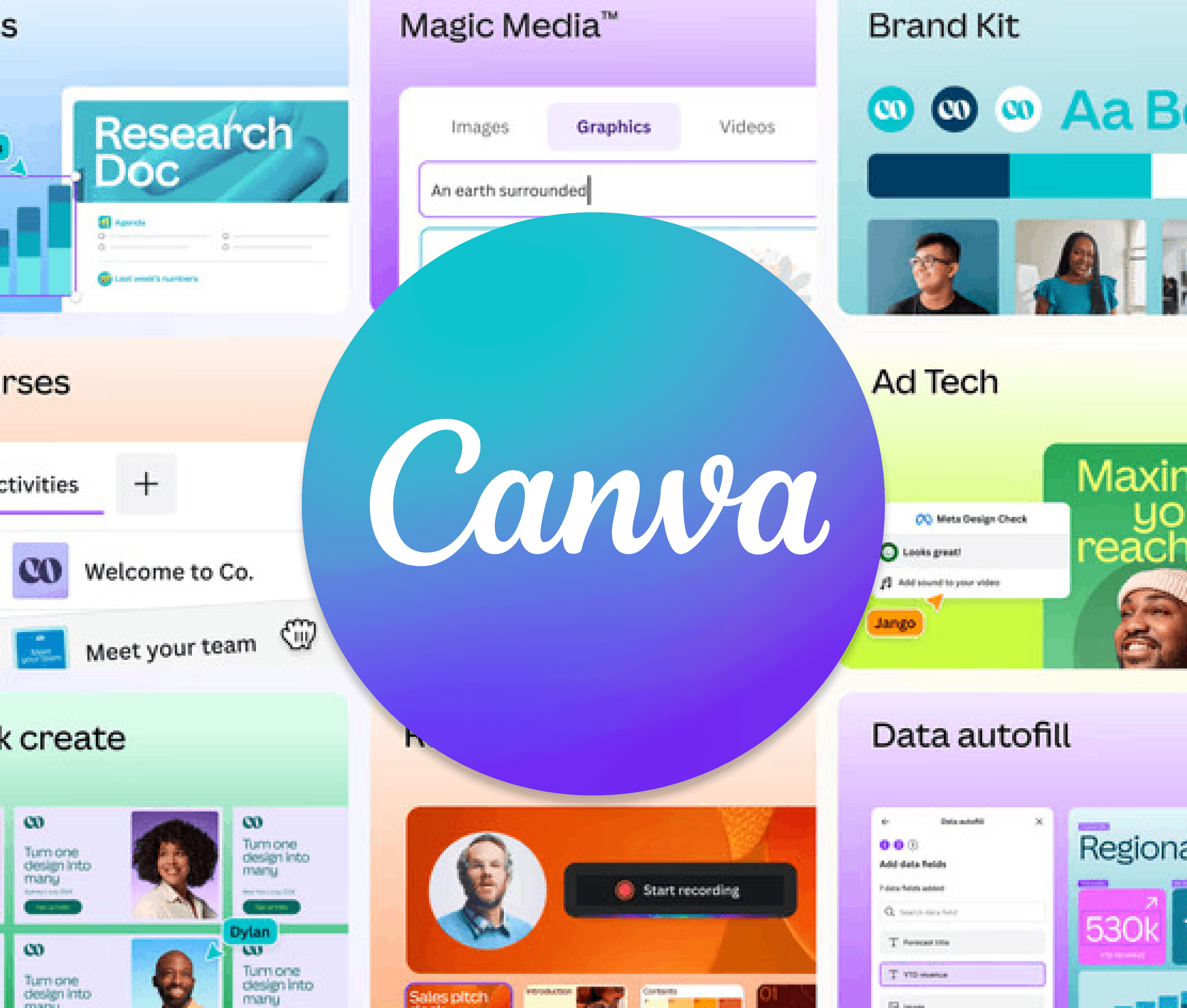Early Scholarship Deadline: 15th Dec 2025
Apply Now





Table of Contents
Learn how Canva's intuitive design platform empowers graphic design for beginners with accessible, AI-powered tools. Usability at its core.
As Jakob Nielsen rightly put it, "usability is a necessary condition for a website’s survival." Usability in design, a quality attribute assessing how easy an interface is to use, can make or break a platform.
For years, digital design was dominated by tools that were difficult to navigate, requiring extensive experience or formal training. Up until 2013, accessible design software often featured intimidating toolkits, overwhelming menus, and an extensive list of features, making it inaccessible to non-professionals.
This complexity was not lost on Canva’s CEO, Melanie Perkins, who noticed the struggles students faced while learning these complicated design programs. While tutoring at the University of Western Australia, she discovered that it would take an entire semester just to teach people where the buttons were, let alone how to design something that looked good.
Drawing inspiration from platforms like MySpace and Facebook, which thrived on their intuitive design platform and easy-to-use interfaces, Perkins envisioned a world where user-friendly design tools were just as accessible. Her first venture, Fusion Books, launched in 2007, targeted the Australian high school yearbook market.
With a mother who was a teacher, Perkins understood the struggles of creating yearbooks using outdated tools. She created a platform that allowed schools to design yearbooks collaboratively, giving teachers access to templates and making the process easier. Fusion Books was a success, expanding from 15 to 80 schools, and Perkins was ready to think bigger.

Inspired by the success of Fusion Books, Perkins and her co-founder, Cliff Obrecht, aimed to create a broader platform that anyone could use. In 2012, after countless rejections from investors, they met with venture capitalist Bill Tai, who introduced them to potential collaborators and investors.
In 2013, Canva was born with a $3 million funding boost. The platform’s launch saw immediate success with over 50,000 sign-ups shortly after, and by 2021, Canva had over 60 million users. As of 2023, Canva reached 125 million users and expanded to offer a suite of AI-powered design tools for creators worldwide.
Unlike professional design software like Adobe Creative Suite, which caters to experienced designers, Canva’s intuitive design platform democratized design by offering a user-friendly solution that anyone could learn and use.
Its extensive library of templates ensured that users—even those with no prior experience—could easily create professional-looking content using design tools for non-designers.
Canva’s all-in-one platform combined multiple tools for design without training, eliminating the need for users to juggle multiple applications.
Looking ahead, Canva is not just resting on its laurels. The company is actively investing in AI to further streamline the design process and enhance Canva user experience. By leveraging AI, Canva aims to introduce smarter features like automatic design suggestions, personalized templates, and enhanced image recognition.
These innovations will allow users to create designs even more efficiently without requiring professional knowledge.
In addition to technological innovation, Canva continues its commitment to inclusion with the platform now available in over 100 languages. Its dedication to sustainability is evident through initiatives promoting climate action and responsible sourcing. Furthermore, Canva offers free access to its platform for non-profits and educational institutions—empowering marginalized groups globally.
By focusing on usability, inclusivity, and technological innovation through its intuitive design platform, Melanie Perkins and her team have transformed Canva into a $40 billion design empire.
Looking forward, its emphasis on AI-powered solutions and sustainability will likely continue driving the Canva success story, solidifying its impact on the world of graphic design for beginners.
1. What makes Canva an intuitive design platform?
Canva’s interface is designed for simplicity and ease of use. It offers drag-and-drop functionality alongside pre-designed templates that make it accessible even for those new to graphic design for beginners.
2. How has Canva democratized design?
By providing user-friendly design tools, Canva allows anyone—regardless of skill level—to create professional-quality designs. This approach has contributed significantly to the concept of design democratization.
3. Why is Canva considered accessible design software?
Unlike traditional tools requiring extensive training or expertise, Canva enables users to create designs effortlessly using its vast library of templates and AI-powered features tailored for design tools for non-designers.
4. What role does AI play in Canva’s growth story?
AI enhances the Canva user experience by offering features like automated suggestions and personalized templates. These innovations align with its mission of providing efficient tools for design without training.
5. How does usability contribute to Canva's success story?
Usability lies at the heart of Canva’s strategy. Its focus on creating an intuitive interface ensures exceptional design platform usability, making it a go-to tool in the realm of accessible software solutions.